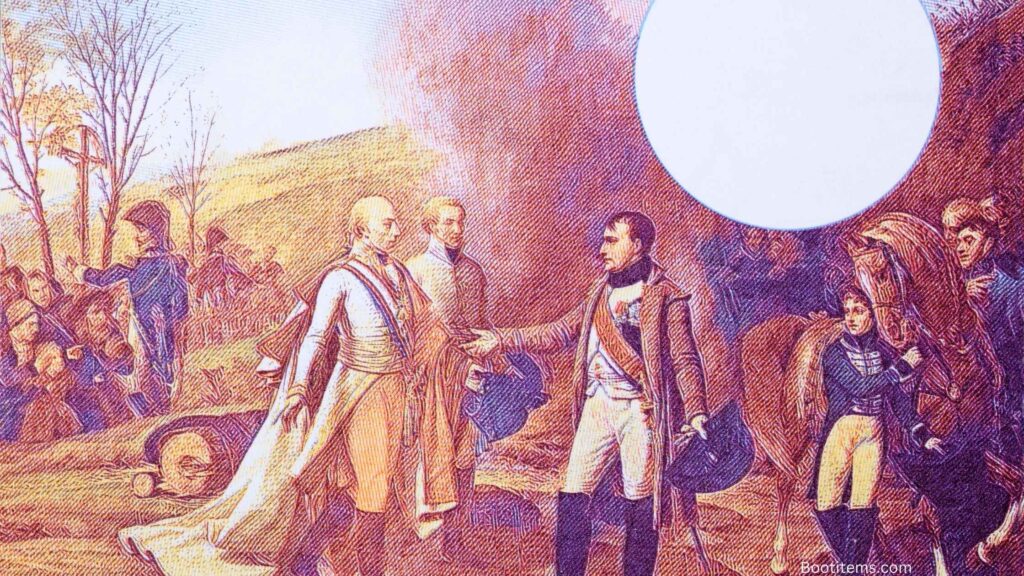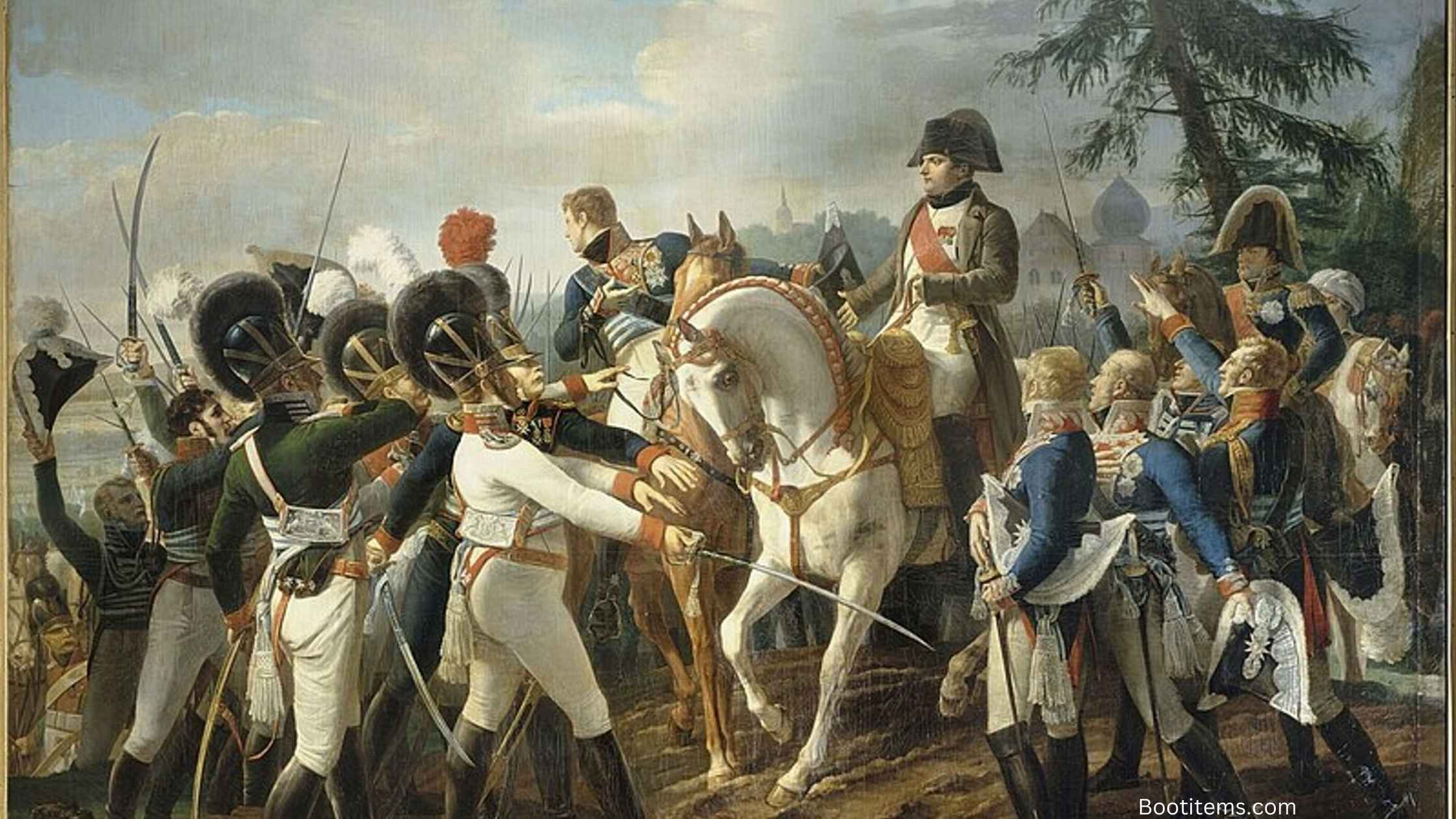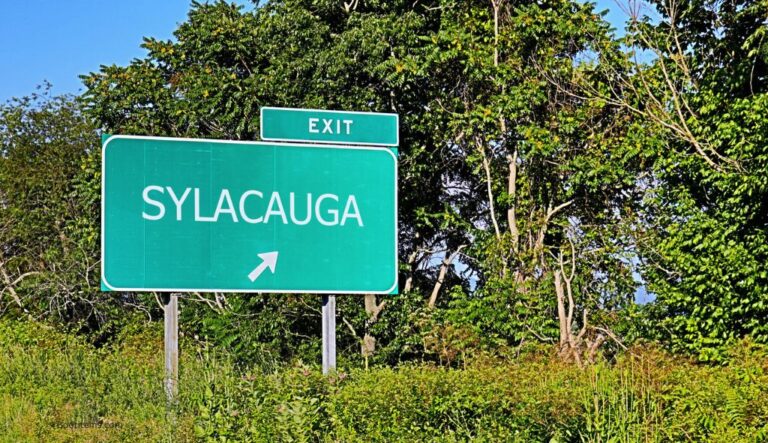5th Anti French Coalition: Napoleon’s 1809 Challenge
The Fifth Coalition was a major alliance formed in 1809 between Britain and Austria to oppose French control over Europe under Napoleon Bonaparte. This coalition marked a crucial turning point in the Napoleonic Wars, resulting in significant battles like Wagram and ultimately ending with French victory through the Treaty of Schönbrunn.
Through this pivotal campaign, Napoleon would face one of his greatest challenges yet demonstrate his military genius once again.
How the Fifth Coalition Began
In the early months of 1809, Europe stood at a crossroads. The Austrian Empire, having watched Napoleon’s power grow unchecked across the continent, decided it was time to challenge French dominance once again. The timing seemed perfect – France was deeply entangled in the Peninsular War in Spain, and the Austrian military had undergone significant reforms that strengthened its capabilities.
The Austrian leadership felt confident in their chances of success. Their army had been modernized, and there was growing anti-French sentiment throughout Europe that they hoped to capitalize on. Britain’s promise of financial support further bolstered their resolve. However, unlike previous coalitions that had united multiple European powers against France, this alliance would prove smaller in scale.
The Opening Moves
As spring arrived in 1809, Archduke Charles of Austria set the coalition’s plans in motion. Leading a reinvigorated Austrian army, he launched a bold offensive into Bavaria, one of France’s key allies. The campaign aimed to strike before Napoleon could fully respond, with simultaneous pushes into northern Italy and attempts to ignite anti-French rebellions throughout German territories.
Napoleon’s response demonstrated why he was considered the greatest military commander of his age. Upon learning of the Austrian attack, he rapidly gathered his forces from across the empire and personally led a counter-offensive into Austria. His swift action resulted in the capture of Vienna by May 1809, though he would soon face an unexpected setback at the Battle of Aspern-Essling.
The Decisive Battle of Wagram
The campaign reached its climax at the Battle of Wagram on July 5-6, 1809. This massive engagement would prove to be one of the most significant battles of the Napoleonic Wars. More than 300,000 troops gathered on the battlefield, and the artillery bombardment that followed was the largest of the entire Napoleonic era.
The battle began with promising Austrian attacks that threatened to split the French army. However, Napoleon’s masterful use of artillery turned the tide of battle. Through a series of complex maneuvers, French forces managed to outflank the Austrian positions. Though the Austrian army eventually retreated, they did so in good order, preserving their fighting force for future conflicts.
Impact and Legacy
The defeat of the Fifth Coalition had far-reaching consequences for European politics and society. The Treaty of Schönbrunn that followed forced Austria to cede significant territories and led to a marriage alliance between Napoleon and Marie Louise of Austria. This union was intended to secure peace between the two empires, though history would prove this hope hollow.
The campaign showcased numerous military innovations that would influence warfare for generations. Artillery tactics evolved, mass conscription systems were refined, and logistics management reached new levels of sophistication. Military planners studied these developments closely, learning valuable lessons about rapid mobilization and the importance of coordinated operations.
Britain’s Role in the Conflict
While Britain’s direct military involvement was limited, their contribution to the coalition proved significant in other ways. The Royal Navy maintained its stranglehold on European waters through the Continental Blockade, protecting merchant shipping and harassing French ports. Perhaps more importantly, British financial support helped sustain Austria’s war effort, though ultimately it wasn’t enough to secure victory.
The Social and Economic Landscape
The war’s impact extended far beyond the battlefield. Civilian life throughout Europe faced significant disruption. Trade routes were severed, food shortages became common, and populations shifted as people fled from advancing armies. The economic consequences included increased taxation, currency devaluation, and paradoxically, some industrial development as nations struggled to support their war efforts.
A Turning Point in European History
The Fifth Coalition represented more than just another chapter in the Napoleonic Wars. It marked a significant evolution in warfare and international relations. The Austrian army’s reforms, though ultimately insufficient, demonstrated the beginning of a modernization process that would transform European militaries. Meanwhile, the growth of nationalist sentiments during this period would have lasting implications for European society.
Napoleon’s victory secured his empire’s position, but also contained seeds of future conflict. The campaign revealed both the strengths and limitations of French power, while encouraging future resistance. The experience gained by both sides would influence military thinking for decades to come.

Common Questions About the Fifth Coalition
How long did the Fifth Coalition last?
The Fifth Coalition lasted from April to October 1809, approximately six months.
Why did Austria start the war? Austria believed France was vulnerable due to its involvement in Spain and hoped to regain lost territories.
How many soldiers fought at Wagram? The Battle of Wagram involved over 300,000 troops combined from both sides.
Why didn’t Russia join the coalition?
Russia was allied with France through the Treaty of Tilsit and chose to maintain neutrality.
What territory did Austria lose?
Austria lost Carinthia, Carniola, and parts of Galicia through the Treaty of Schönbrunn.
How did Britain help Austria?
Britain primarily provided financial support and maintained naval pressure on France.
What was Napoleon’s biggest advantage?
Napoleon’s greatest advantage was his superior military leadership and experienced Grande Armée.
Did the Austrian army improve after its reforms?
Yes, the Austrian army showed improved performance but still couldn’t match French tactical superiority.
What role did artillery play?
Artillery played a decisive role, particularly at Wagram, where French guns determined the battle’s outcome.
How did this coalition affect Napoleon’s empire?
The victory strengthened Napoleon’s empire and led to his marriage alliance with Austria.

Samantha Yates is a creative writer and journalist with expertise in content creation and editing. She holds an MA in Creative Writing and brings professional experience from Lionbridge, where she developed engaging content for leading technology companies







